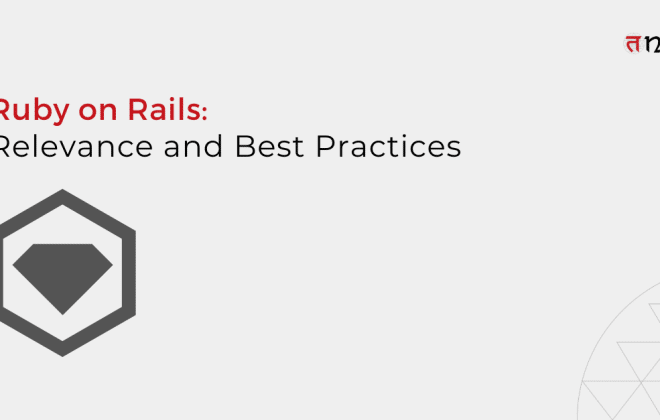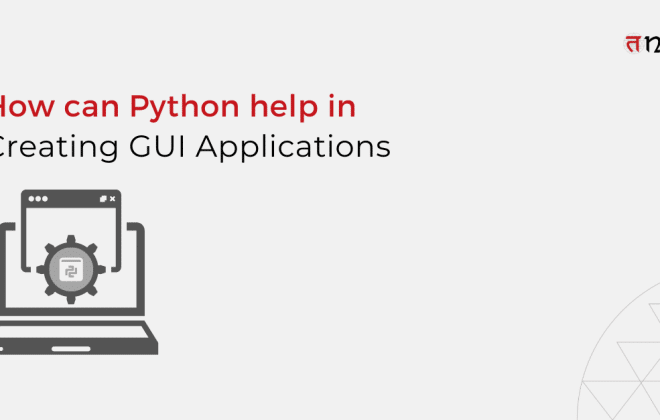
Using Ruby on Rails for Rapid Application Development in Engineering Services
Table of Contents
ToggleRuby on Rails is an effective framework for developing applications quickly. It has built-in security measures, flexible frontend and backend capabilities, and a thriving development community. Gems, a vast library of free plugins, makes it simple to customize and include different features. Ruby on Rails has been demonstrated to be a flexible and effective solution for creating reliable web applications, with a reputation for accelerating software development and extensive industry usage.
Zendesk is a cloud-based help desk management system that provides customized capabilities for establishing an online community, knowledge base, and customer care portal. Its frontend portal can be tailored to specific requirements and includes features like live chat for real-time customer support. Additionally, Zendesk’s functionality is improved by its smooth integration with well-known programs like Salesforce and Google Analytics.
Although less well-known, Zendesk is a great illustration of how Ruby on Rails enterprise application development can also be useful for smaller software firms. Similarly, Couchsurfing is a lesser-known firm that serves as a unique substitute for Airbnb. Despite its 2003 founding, Couchsurfing serves a smaller market by matching thrifty tourists with kind hosts ready to offer free lodging without the luxuries and extras that Airbnb provides.
In its development, Couchsurfing made use of the Rails language and framework. As a result, they have created a vibrant online community and interaction platform supported by skilled Rails developers that uphold high-quality code. Couchsurfing has successfully developed a streamlined and user-friendly platform that encourages connections between guests and hosts by utilizing the power of rapid software development with Ruby on Rails.
Source: Learn Enough
Ruby on Rails for Application Development: A Powerfull Framework with Extensive Industry Adoption
As of March 2021, Ruby on Rails has created 380,996 websites across 199,681 unique domains. It is employed by 4.5% of websites that use server-side programming languages. In the web-framework market, Ruby on Rails holds a market share of 27.43% and competes with 19 other tools. The top alternatives are Django, with a 31.28% market share, Spring Framework, with 22.26%, and Selenium WebDriver, with 10.67%.
Ruby on Rails is utilized in a variety of industries, including Computers, Electronics, and Technology (6.16%), Science and Education (3.71%), and Arts & Entertainment (3.61%). It demonstrates the widespread adoption of the framework across different sectors, highlighting its versatility and applicability in diverse fields.
It was discovered through the StackOverflow 2022 Survey that there was a 50/50 love/hate connection with the language. Approximately 71467 developer replies were examined, and the results revealed that 49.99% of respondents Love the RoR software development while 50.01 % Fear it.
The widespread use of Ruby on Rails is due to various causes, one of which is the rapid software development it facilitates. Ruby on Rails developers create software 30–40% more quickly than developers using other programming languages and auxiliary frameworks.
Thus, it is safe to state that the Ruby programming language is widely used across industries and that developers are both impressed and concerned by it. Furthermore, its acceptance and adaptability contribute to its acceptance and widespread use in many applications.
Speeding Up Software Development with Ruby on Rails
Businesses may maintain a competitive edge, responsiveness, and agility in today’s fast-paced business environment by choosing Ruby on Rails software product engineering services for their digital product development venture. Development and integration procedures are sped up by Ruby’s clear syntax and organized codebase. Rails’ rich built-in libraries give new applications a head start by integrating frequently used skeleton code. Thanks to this potent mix, businesses are given the tools they need to develop software more quickly and implement it smoothly.
Ruby on Rails is frequently used to generate MVP versions of products or prototypes. The rapid pace of the RoR software development process is due to various factors. A few of them are listed below:
- Complete Framework
- Ruby on Rails ecosystem is thorough and feature-rich, including a wide range of necessary products and services. Database communication, schema migrations, email handling, WebSockets, internationalization, caching, API mode, and strong security defaults are just a few of its built-in features.
- Utilizing these pre-built capabilities drastically cuts down on development time; compared to starting from scratch, Ruby developers have reported time savings of up to 50%. In addition, Rails’s “battery-included” concept facilitates quicker development by removing the requirement to build these functionalities from the ground up.
- Third-party Components or Ruby Gems
- Ruby on Rails uses the vast collection of Gems that the Ruby programming language has to offer, enabling developers to create applications more quickly. By offering pre-built functionality, these Gems free developers from building things from scratch, thus making enterprise application development rapid.
- For instance, Gems like Devise make it simple to set up authentication, including registration and login pages, or to integrate with social media sites like Facebook or Google. Similarly, using Gems like ActiveAdmin makes creating an administrator panel simple.
- Layered Structure
- Ruby on Rails provides a disciplined and well-organized approach to application development by adhering to the MVC (Model-View-Controller) architectural paradigm. Especially at the beginning of a project, MVC allows developers to concentrate on the task rather than wasting time on code organization.
- In addition to boosting productivity and efficiency, the framework’s convention over configuration philosophy and integrated testing framework makes software development with Ruby on Rails an excellent option for rapid and effective software development.
- Fewer Codes
- Why is a Ruby on Rails development company like Tntra such a popular web development alternative? One explanation is that its preloaded code libraries, which produce a skeleton structure with a straightforward command, enable developers to write less code. The notion of convention over configuration makes setup easy and speeds up development. The DRY (Don’t Repeat Yourself) philosophy, which Rails adheres to, prevents code duplication and guarantees effective and error-resistant code.
- Because of these frameworks’ modular structure and understandable Ruby code, less comprehensive documentation is required, promoting cooperation and project continuation. Ultimately, these features improve Ruby on Rails development productivity and efficiency.
Read more: Why is Ruby on Rails Migration Important in 2023?
4 Incredible Advantages of Ruby on Rails
Ruby on Rails has been a preferred language of choice for many technology services consulting companies. Here are the top advantages of Ruby on Rails:-
- Flexibility:
- Ruby on Rails allows for the use of both frontend and backend functionality, providing flexibility in building online applications. While single-page web apps created using frameworks like Angular, React, or VueJS might offer more dynamic user interfaces and quick responses while still utilizing the advantages of Rails as a backend, traditional Rails applications may not be as responsive right away.
- Security:
- Ruby on Rails has built-in security characteristics that are, by default, enabled, offering a secure development framework. An RoR development project enjoys thorough security assurance of the process, which adheres to a strong security development lifecycle. Since there is a vibrant Rails community, vulnerabilities are constantly found and fixed, and the framework is well documented, effective security procedures are ensured.
- Community:
- One of the most widely used programming languages on GitHub, Ruby on Rails, enjoys the support of a thriving and large developer community. This vibrant community constantly improves the codebase, and its members are always willing to help out other programmers. It’s likely that someone has already dealt with similar problems or is willing to offer support if you encounter any difficulties or need certain functionality, fostering a collaborative environment that will lead to project success.
- Gems:
- A significant benefit of Ruby on Rails is the abundance of free plugins, or “Gems,” that it provides. With the help of these plugins, you may modify your website to fulfill specific company needs, whether that means creating a distinct social network or including cutting-edge e-commerce services with strong user data security.
Discover the power of ruby on rails for your online pharmacy store! – Learn more online pharmacy case study.
Conclusion
Businesses looking for software product engineering solutions in today’s hectic business environment can gain a lot by developing their applications using Ruby on Rails. Faster development and integration are made possible by Ruby on Rails because of its concise syntax, well-organized codebase, and abundant built-in libraries. In addition, the framework’s ” battery-included ” approach, which uses pre-built functionality and Ruby Gems, drastically cuts down on development time and frees engineers to work on essential features.
The MVC architectural pattern’s layered structure enhances efficiency and speeds up development. Collaboration and productivity are also boosted by the framework’s emphasis on producing fewer codes and the DRY concept. Overall, Ruby on Rails equips companies to quicken their software development cycle and maintain market competitiveness. Choose Ruby on Rails to build a web application today.
Tntra is a leading software product engineering company ready to rapidly develop and deploy top-grade applications for your enterprise. Contact us today.





